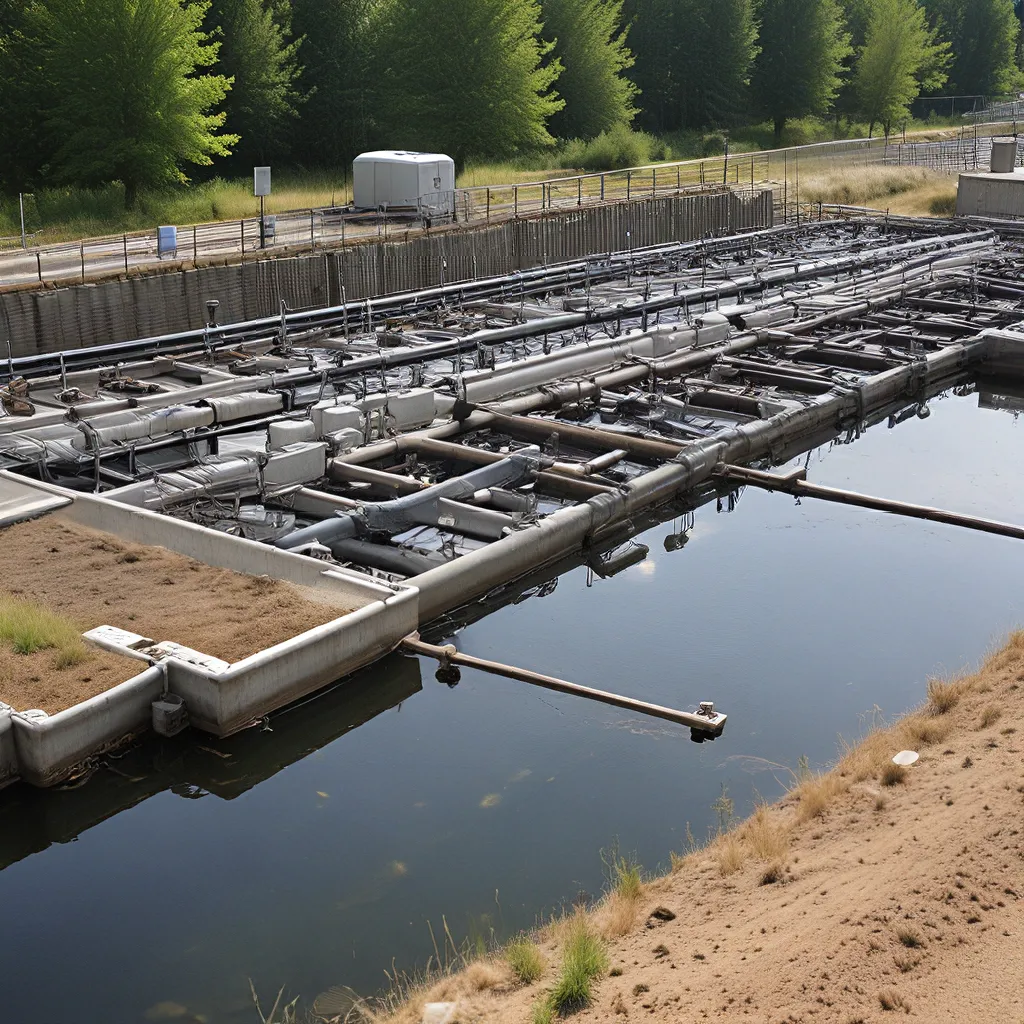
As someone who’s always been fascinated by the intersection of technology and the environment, I recently stumbled upon a fascinating concept that’s been quietly revolutionizing the way we approach wastewater treatment: microbial fuel cells (MFCs). These clever little devices are not only cleaning up our water, but they’re also generating clean energy in the process. It’s like a two-for-one deal that’s got me geeking out!
But before I dive into the nitty-gritty of how these MFCs work, let me take a step back and provide some context. You see, the way we’ve traditionally treated wastewater has been, well, let’s just say it’s not exactly the most efficient or environmentally friendly approach. We’ve been relying on energy-intensive processes that consume a lot of resources and produce a whole lot of waste. It’s kind of like trying to clean your house with a firehose – it gets the job done, but it’s messy and wasteful.
That’s where MFCs come in to save the day. These nifty little devices harness the power of biofilms – those slimy, sticky communities of microorganisms that love to hang out on surfaces. You know, the ones that can be a real pain to scrub off your shower tiles? Well, turns out these biofilms are actually pretty darn useful when it comes to wastewater treatment.
The way it works is that the electroactive biofilms that form on the electrodes of the MFC can break down organic matter in the wastewater and generate electrical current in the process. It’s like a tiny microbial power plant, churning out clean energy while cleaning up the water. Talk about a win-win!
But it’s not just the biofilm itself that’s doing all the heavy lifting. Oh no, there’s some pretty cool quorum sensing going on too. You see, these microbes in the biofilm have this nifty way of communicating with each other, using special chemical signals called autoinducers. And when they all start to “hear” these signals, they know it’s time to get to work, breaking down those pesky pollutants and producing that precious electricity.
Heck, these microbes are even using extracellular polymeric substances (EPS) to create a three-dimensional matrix that helps them hang onto the electrode surfaces. It’s like they’re building their own little microbial apartments, complete with all the amenities they need to thrive.
But the real magic happens when you start to scale up these MFCs and use them in biofilm-based reactors for industrial wastewater treatment. Suddenly, you’ve got a whole army of these tiny power plants working together to clean up some pretty gnarly stuff, from heavy metals to organic pollutants. And the best part? It’s all done in a super eco-friendly way, with minimal energy input and waste production.
Now, I know what you’re thinking: “But wait, how do they actually generate electricity from all this wastewater?” Well, my friends, it’s all thanks to a process called bioremediation, where the microbes in the biofilm use the organic compounds in the wastewater as a food source and release electrons in the process. These electrons then flow through the MFC’s electrodes, generating a current that can be used to power all sorts of cool stuff.
But the fun doesn’t stop there. Researchers are even exploring ways to use synthetic biology techniques, like CRISPR-Cas, to engineer these microbial communities to be even more efficient at breaking down pollutants and generating electricity. It’s like we’re creating a whole new breed of super-powered microbes that are ready to save the planet, one wastewater treatment plant at a time.
Now, I know what you might be thinking: “Okay, this all sounds great, but how realistic is it, really?” Well, let me tell you, the research is definitely promising. While we’re still in the early stages of fully understanding and implementing MFCs, the potential is huge. Imagine a world where we can treat our wastewater, generate clean energy, and do it all in a way that’s gentle on the environment. It’s like a dream come true!
Of course, there are still some challenges to overcome, like optimizing the MFC design, improving the power output, and scaling up the technology for large-scale applications. But with the brilliant minds in the scientific community, I’m confident that we’ll figure it out. After all, these microbes have been cleaning up our messes for billions of years – it’s about time we start working with them instead of against them, don’t you think?
So, if you’re like me and you’re always on the lookout for innovative solutions to our environmental woes, keep an eye on the world of microbial fuel cells. It might just be the key to unlocking a future where we can have our clean water and our clean energy too. Who knows, maybe one day we’ll all be powering our homes with the very wastewater we flushed down the toilet. Stranger things have happened, right?